In February 2020, the new DYNAMIS D-FLAME burner was installed in the Supremo Secil rotary kiln in Adrianópolis-PR, Brazil. After a month of operation, the factory has been reporting great results such as improved clinker quality and increased production of the cement mill. The average size of the grain size fell from more than 30 µm for a range between 20 and 24 µm, the average furnace feed went up from 230 to 240 t / h of raw material and the milling production went up from 145 to 155 t / h ARI cement

This success was achieved by replacing the original Duoflex burner supplied by FLSmidth for the new D-FLAME burner from DYNAMIS. The existing primary air blower was maintained to supply tangential and internal air and a new blower was installed to supply high pressure external air to the new burner.
The Table below shows the main operating parameters of the old Duoflex and the new furnace burner:
| DYNAMIS D-FLAME | Duoflex | |
| Adjustment pressure | 430 / 150 / 120 mbar | 260 mbar |
| Adjustment air | 11,3 % from stoichiometric | 10,6 % from stoichiometric |
| Flame Impulse | 8,10 N/MW | 6,96 N/MW |
The fuel currently used is petroleum coke, but the burner has a channel for injection of solid waste and a lance for nebulization of liquid waste.
Figure 2 shows the burner tip of the new DYNAMIS D-FLAME burner:
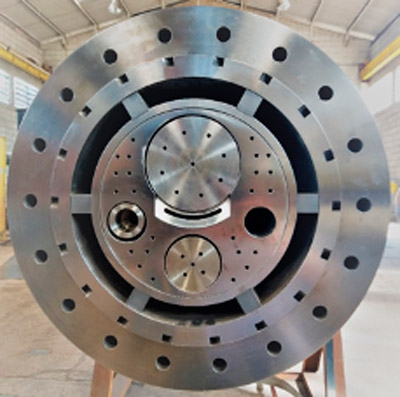
Differently of Duoflex, which has only one external annular channel for adjusting air injection with moving parts in the burner tip to regulate the swirl, the DYNAMSI D-FLAME has independent external and tangential air channels and has the injected flows through 18 discrete holes. This construction with independent jets provides a better mixture between the secondary air and the fuel and thus accelerates combustion and shortens the flame.
The external air has only axial velocities components, represents the largest portion of the burner adjustment air and is the main responsible for promoting entrainement and keeping the flame shorter and centralized in the kiln.
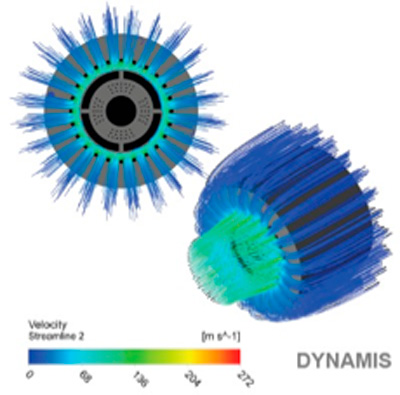
The tangential air has axial and tangential velocity components and generates the flame swirl, promoting internal recirculation and stabilizing the flame mainly in situations of kiln instability or when heating is started with the cold kiln and without the contribution of hot secondary air. The third component of the D-FLAME adjustment air is the internal air that is injected into the kiln axially and with lower flow.
The independence of the D-FLAME adjustment air channels allows its performance to be verified more easily, as it is possible to install pitot flowmeters for each component. Thus, the plant can monitor the primary air flow, the flame Impulse (N / MW) and the flow constants of each channel on line in the control panel, which may indicate excessive wear or obstructions in the burner in advance before these problems cause damage to the kiln operation and cause an unscheduled shutdown.
Figure 4 shows the screen of the supervisory system developed at Supremo.
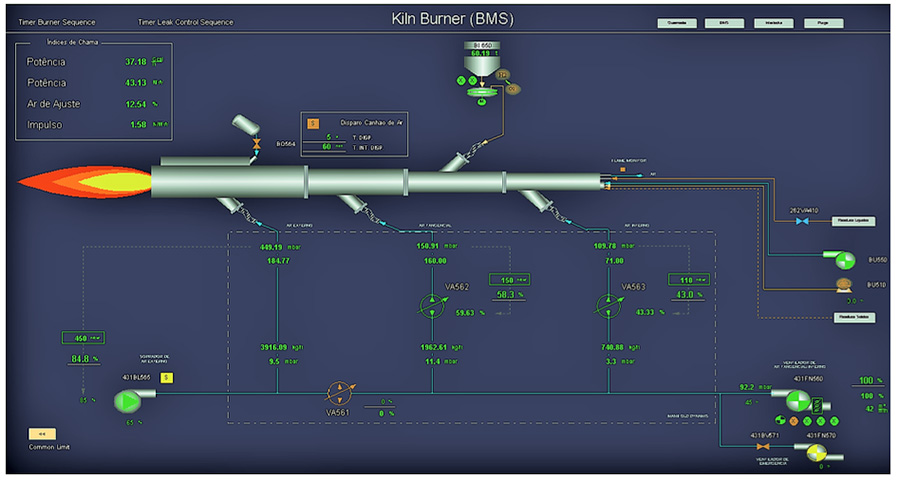
The configuration shown in Figure 4, with a new blower to supply external air at high pressure and with the existing fan providing tangential and internal air at lower pressures, provides a reduction in electricity consumption compared to traditional systems that have only one blower to supply all the burner adjustment air, as this way, it is not necessary to reduce the tangential air pressure with the use of a butterfly valve.
As an innovation for Industry 4.0, all butterfly valves in the burner adjustment air manifold system were supplied with an electric motor and can be adjusted remotely by the control room operator.
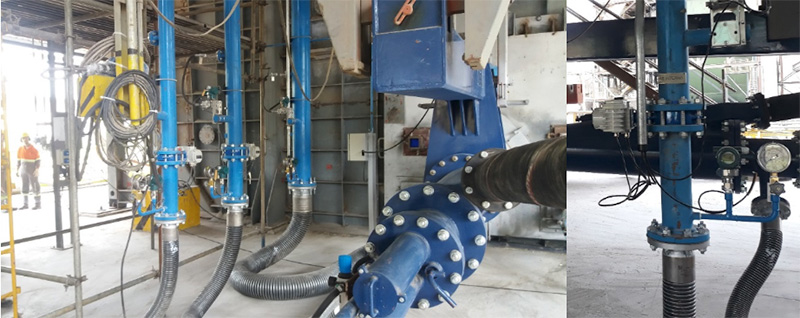
In a simple way, the operator enters the desired pressure setpoint and a PID control loop adjusts the velocity of the external air blower or modulates the position of the tangential and internal air valves, for pre-established configurations of production levels, clinker quality, fuel characteristics, etc. Fine adjustments can also be made remotely by the operator, without leaving the control room.
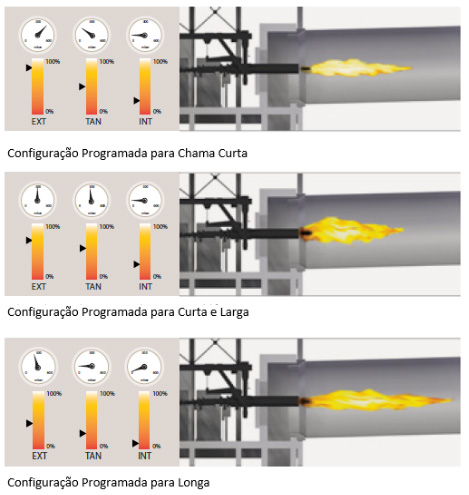
A short burning zone with a well-centered flame was essential to make it possible to gain production and quality proven in this last start-up of the new DYNAMIS D-FLAME burner installed in the Supremo Secil furnace in Adrianópolis.

Want to improve the quality of your clinker?
Want to gain productivity in the rotary kiln and cement grinding?
Do you have a Duoflex and are you thinking about changing your burner?
Do you want to automate the operation of your burner?
Contact DYNAMIS and make an appointment for a D-FLAME to your kiln.
Dynamis team

